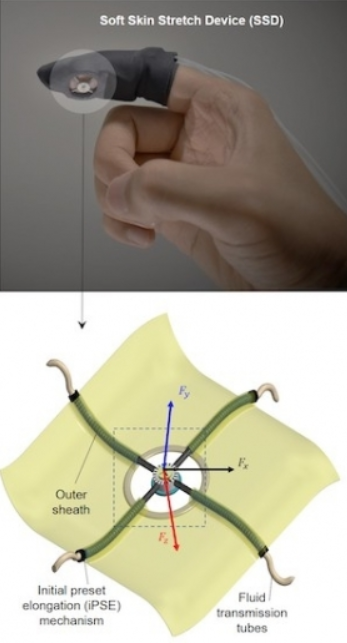New glove for remote touch
 Australian engineers have invented a glove that simulates the sense of touch.
Australian engineers have invented a glove that simulates the sense of touch.
A team at the University of New South Wales is imagining a world were a person could feel another’s touch from across the world, or maybe pick up and handle a virtual tool in a video game, using haptic feedback.
Haptic technology mimics the experience of touch by stimulating localised areas of the skin in ways that are similar to what is felt in the real world, through force, vibration or motion.
Robotics researcher Dr Thanh Nho Do says the sense of touch is something many people take for granted to perform everyday tasks.
“When we do things with our hands, such as holding a mobile phone or typing on a keyboard, all of these actions are impossible without haptics,” he says.
“The human hand has a high density of tactile receptors and is both an interesting and challenging area to encode information through haptic stimulation, because we use our hands to perceive most objects every day.
“There are many situations where the sense of touch would be useful but is impossible: for example, in a telehealth consultation a doctor is unable to physically examine a patient. So, we aimed to solve this problem.”
Dr Do says the team has already applied for patents.
“Our three-way directional skin stretch device (SSD), built into the fingertips of the wearable haptic glove we also created, is like wearing a second skin – it’s soft, stretchable and mimics the sense of touch – and will enable new forms of haptic communication to enhance everyday activities,” he said.
“What’s also special about our new technology is that it’s scalable and can be integrated into textiles for use in various potential applications such as telehealth, medical devices, surgical robots and training, augmented and virtual reality, teleoperation and industrial settings.
“The device aims to solve a common problem in emerging systems – such as assistive devices, remote surgery, self-driving cars and the guidance of human movements – where visual or auditory feedback can be slow, unintuitive and increase the cognitive load.”
Existing technology struggles to recreate the sense of touch in virtual environments.
“Visual or auditory cues are easy to replicate, but haptic cues are more challenging to reproduce. In a virtual environment, we can see objects but we are unable to feel them as if we were directly touching them,” the study’s lead author Mai Thanh Thai said.
“It is almost impossible to enable a user to feel something happening in a computer or smartphone using a haptic interface, such as commercially available smart glasses.
“Vibration is the most common haptic technology today and is built into many electronic devices, such as the Taptic Engine attached to the back of a trackpad in laptops, which simulates a button clicking.
“But haptic feedback with vibration becomes less sensitive when used continuously or when users are in motion, leading to desensitisation and impaired device functionality.”
Dr Do says the new technology introduces a novel method to recreate an effective haptic sensation via miniature artificial “muscles”.
“Our soft, wearable haptic glove enables people to feel virtual or remote objects in a more realistic and immersive way. The inbuilt soft artificial muscles generate sufficient normal and shear forces to the user’s fingertips via a soft tactor, enabling them to effectively reproduce the sense of touch,” he said.
“It works like this: imagine you are in Australia while your friend is in the United States. You wear a haptic glove with our integrated three-way directional SSDs in the fingertips and your friend also wears a glove with integrated 3D force sensors.
“If your friend picks up an object, it will physically press against your friend’s fingers and their glove with 3D force sensors will measure these interactions.
“If these 3D force signals are sent to your haptic glove, then the integrated three-way directional SSDs will generate these exact 3D forces at your fingertips, enabling you to experience the same sense of touch as your friend.”
Dr Do estimates the new technology could become available in the next 18 months to three years – if plans to commercialise the device are realised.
More details are available in this scientific report.







 Print
Print